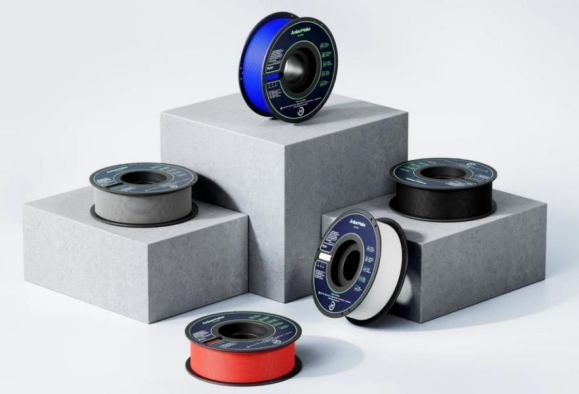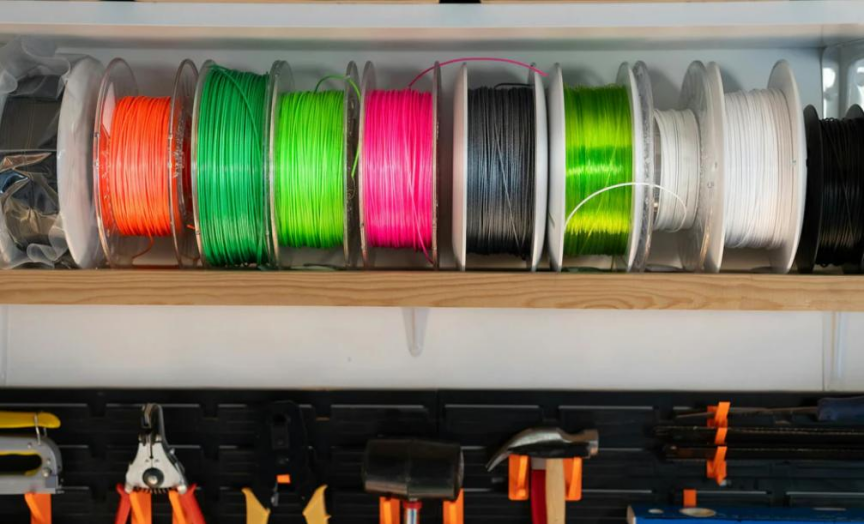Proper storage of 3D printer filament is essential to maintain its quality and ensure optimal printing results. If stored improperly, filament can absorb moisture from the air, affecting print quality and possibly damaging your printer. This blog will provide detailed information on how to store your 3D printer filament for longevity, helping you achieve the best print results while preserving the integrity of your filament.

Why Proper Filament Storage Matters
Improper storage can lead to moisture absorption, affecting print quality and potentially damaging your printer. Understanding how storage impacts filament helps you maintain its integrity.
The Impact of Humidity on Filament Quality
Humidity is a major threat to 3D printer filament. When filament absorbs moisture from the air, it can cause discoloration and fading, reducing the visual quality of your prints. The filament becomes brittle and prone to breakage, increasing the risk of failed prints. This moisture buildup can also damage the printer’s extruder, potentially leading to costly repairs and disruptions in your 3D printing projects.
Effects of Temperature on Filament
Temperature fluctuations can significantly impact filament quality. High temperatures cause the filament to soften and deform, while cold temperatures make it brittle. Both conditions result in poor print quality. To ensure consistent and reliable prints, it’s essential to store filament at a stable, moderate temperature. This helps maintain its structural integrity and usability, ensuring optimal results for your 3D printing projects.
Best Practices for Storing 3D Printer Filament
Follow simple tips like vacuum sealing, using airtight containers, and placing silica gel desiccants to keep filament dry and free from damage.
Vacuum Sealing and Desiccants for Optimal Storage
Vacuum sealing is an effective way to store filament by creating an airtight environment that prevents moisture absorption. Adding silica gel desiccants to the storage bag further helps absorb any residual moisture, offering an extra layer of protection. This method is especially beneficial for long-term storage, ensuring your filament stays dry and ready for use, preserving its quality and performance over time.
Optimal Storage Containers for Filament
Using airtight containers, such as plastic bins or dedicated filament storage boxes, is crucial for filament preservation. These containers protect against dust, moisture, and temperature fluctuations. Opt for clear or translucent containers, which let you easily monitor the filament without opening them, thus maintaining the airtight seal. This simple step ensures your filament stays in optimal condition for longer, enhancing print quality and consistency.
How to Store Filament Based on Material Type
Different filaments require specific storage conditions to maintain quality. This section provides tips for PLA, PETG, ABS, nylon, and specialty filaments.
PLA and PETG Filament Storage Tips
PLA and PETG filaments are less prone to moisture absorption but should still be stored in dry, cool environments. Keep them vertically on shelves to avoid deformation and tangling. Additionally, using a dehumidifier in your storage area can help maintain low humidity levels, ensuring the filaments remain in optimal condition for printing. Proper storage extends their lifespan and preserves print quality.
Storing ABS, Nylon, and Specialty Filaments
ABS, nylon, and specialty filaments are sensitive to moisture, which can affect print quality. Store these filaments in airtight containers or vacuum-sealed bags with silica gel desiccants to keep them dry. Additionally, consider using filament dryers to remove any absorbed moisture before printing. This ensures optimal print performance and prevents issues like clogging or weak layer adhesion during 3D printing.

What Are the Common Mistakes in Storing 3D Printer Filament?
Avoid these common storage errors to keep your filament in prime condition and ready for printing.
Leaving Filament Exposed to Air
Leaving filament exposed to air is a common mistake that can lead to moisture absorption, even in a short time. This can cause print issues like bubbling, poor adhesion, or inconsistent extrusion. To avoid this, always store filament in airtight containers or vacuum-sealed bags when not in use. Proper storage ensures filament stays dry and ready for optimal 3D printing performance.
Storing Filament in High-Humidity Environments
Storing filament in humid environments increases moisture absorption, which can affect print quality. Avoid places like basements or garages without climate control. Instead, maintain a stable, moderate humidity level in your storage area. Using dehumidifiers and hygrometers can help monitor and control moisture, ensuring your filament stays dry and ready for optimal 3D printing performance. Proper storage extends the lifespan of your filament and enhances print results.
Conclusion
Properly 3d printer filament storage is vital for maintaining its quality and achieving excellent print results. By understanding the impact of humidity and temperature, and following storage best practices like vacuum sealing and using airtight containers, you can extend the lifespan of your filament. Store filament based on material type, avoid common storage mistakes, and preserve your filament quality for the best 3D printing experience.






